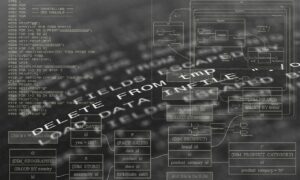The adoption of hybrid inverters by an increasing number of homes is largely attributable to their capacity to offer energy management and cost efficiency. They integrate a solar inverter and a battery inverter, enabling households to harvest and store renewable energy and potentially lower electricity bills by up to 50%. Moreover, with AI-driven load balancing, hybrid inverters can now intelligently distribute power within the household to further boost efficiency.
Along similar lines, we will discuss the 3-phase hybrid inverter here, along with its complete introduction and some pointers on choosing the best hybrid inverter. We will also investigate the Sungrow hybrid inverter as a potential primary option and its many benefits and characteristics.
So, let’s get started.
What Is A 3-Phase Hybrid Inverter?
A 3-phase hybrid inverter, an essential element of modern distributed energy resources (DER) and storage systems, is a sophisticated device that converts direct current (DC) from sources like photovoltaic (PV) solar panels or batteries into alternating current (AC), and vice versa, across three separate phases or electrical circuits. The “hybrid” label comes from the ability of such inverters to manage multiple input types – grid power, renewable power, and battery storage – seamlessly. Meanwhile, the inverter operates via complex control algorithms that balance loads and optimize the power quality and stability between the connected loads and sources.
When the PV cells or batteries generate DC power, the inverter’s power electronics, including Insulated Gate Bipolar Transistors (IGBT), switch on/off at high frequency in a process known as Pulse Width Modulation (PWM) to convert this DC into three-phase AC power with balanced voltage and current waveforms across the phases. Then, the AC is synchronized with the grid frequency (50Hz or 60Hz, depending on the region) to be used in the local network or fed back into the grid. Conversely, in the event of a shortage of renewable power, the inverter can draw AC power from the grid, convert it back to DC for battery charging, or direct use by certain appliances.
Tips to Select the Top 3-Phase Hybrid Inverter
So, here we discuss some factors to consider when selecting the top 3-phase hybrid inverter.
Power Requirements
The foremost point to consider when choosing a 3-phase hybrid inverter is the power requirements of the load and the source. The rated power output of the inverter should be equal to or greater than the total load requirement, considering both continuous and peak load demand. Furthermore, if the inverter is used in a grid-tied solar system, you must consider its maximum AC output power to ensure it aligns with the grid connection standards. The maximum DC input power must also correspond to the combined power output of the solar panels in the system. Besides, the inverter should have the ability to balance the power supply across all three phases evenly.
Efficiency and Performance
The efficiency of a 3-phase hybrid inverter is a key determinant of its overall performance. It typically involves power conversion efficiency: the ratio of power output to power input. An efficient inverter has less energy loss during the DC-to-AC conversion process, ensuring that more of the generated energy is used. One crucial metric to consider is the European or weighted efficiency, which provides a realistic measure of an inverter’s performance under partial load conditions. Additionally, the inverter should demonstrate a high level of performance under various weather conditions, including low light conditions, and have features such as MPPT (Maximum Power Point Tracking) to optimize the use of generated power.
Maintenance
Regular maintenance is integral to prolong the lifespan of a 3-phase hybrid inverter and optimize its operation. Ideally, the inverter should have user-friendly interfaces for convenient system monitoring and diagnostics. Advanced models may offer remote monitoring features for real-time performance data, fault alerts, and automatic firmware updates. Also, stout construction and the use of high-quality materials can increase an inverter’s durability and reduce maintenance needs.
Safety and Protection
Given that inverters deal with high electrical currents, safety and protection features are vital. The inverter should have protection features against electrical faults like overvoltage, undervoltage, overcurrent, short circuit, and ground faults. It should also include protections for thermal faults: overheating and overcooling. If the system is connected to the grid, anti-islanding protection is necessary to prevent the inverter from feeding power back to the grid during a power outage. Plus, the inverter should comply with the safety standards relevant to your region, such as UL (Underwriters Laboratories) or IEC (International Electrotechnical Commission) standards.
Brand Reputation
Lastly, considering the brand reputation can help ensure a quality product backed by reliable customer support. Established inverter manufacturers have a proven track record of delivering reliable, efficient, and durable products and are likely to provide better warranty terms. User reviews and ratings, industry awards, and certifications can provide valuable insights into a brand’s reliability and the performance of its inverters. A well-known brand is more likely to have a wide network of service centers and technicians, ensuring prompt and efficient after-sales service.
Advantages of Choosing Sungrow Hybrid Inverter: SHRT-20
Considering the above points when choosing the best 3-phase hybrid inverter, the Sungrow 5kW Hybrid Inverter (SHRT-20) offers a compelling blend of advantages for residential solar energy installations. Key among these is its flexibility; the inverter can accept a high current input of DC 13.5A, compatible with high-power photovoltaic modules. It supports parallel connections with master-slave controlling and offers 100% power to unbalanced loads in backup mode.
What’s more, it is adaptable to retrofit scenarios, suitable for various applications. Its seamless transition to backup mode offers energy independence by protecting against power outages, with fast charging/discharging capabilities catering to high consumer demands.
The Sungrow SHRT-20 provides smart management features, including compatibility with AC EV chargers for green energy to electric vehicles, optimized built-in EMS for high self-consumption, and free online monitoring, which enhances energy management for end users, installers, and retailers. Remote firmware updates and customizable settings provide added convenience.
Finally, the ease of installation is a noteworthy benefit; unique push-in connectors enable time-saving installation, touch-free commissioning with smartphones makes setup a breeze, and its lightweight and compact design prompts its all-inclusive user-friendly nature.





























